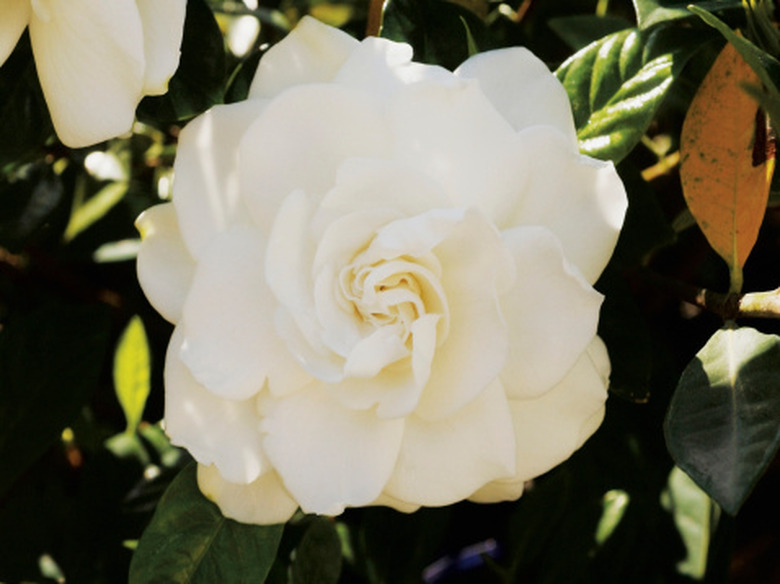Are Gardenias Annuals Or Perennials?
Gardenias are perennial evergreen shrubs and small trees. These plants enjoy direct sunlight and average temperatures of 68 degrees Fahrenheit or higher. Depending on the climate and growing conditions, some gardenia plants act like an annual.
History
The Gardenia species belongs to the plant family rubiaceae. John Ellis named the species after his friend Dr. Alexander Garden, an America botanist. The origins of the gardenia plant started in the southern portions of China. They grow naturally in tropical parts of Asia, Africa, Australia and Hawaii.
- Gardenias are perennial evergreen shrubs and small trees.
- Depending on the climate and growing conditions, some gardenia plants act like an annual.
Types
There are over 200 species of the gardenia. The two main types of gardenias are gardenia jasminoides Ellis and the gardenia thunbergia L.f. Some other types of gardenias are gardenia brighamii, gardenia psidioides, gardenia taitensis, gardenia jasminoides 'plena', and gardenia jasminoides radicans. Gardenias come in single or double flowering varieties. The gardenia brighamii is a nearly extinct tree species located in Hawaii.
Features
Gardenias have waxy leaves that are green and leathery likes. The leaves develop in formations of three or four leaves. The gardenia has elegant white flowers with a sweet fragrance. The flowers grow in clusters in hues of white or pale yellow starting in the middle of spring until mid-summer. This plant ranges in heights of 3.3 to 49 feet in height.
- There are over 200 species of the gardenia.
- Some other types of gardenias are gardenia brighamii, gardenia psidioides, gardenia taitensis, gardenia jasminoides 'plena', and gardenia jasminoides radicans.
Gardenias Annuals Or Perennials?
A gardenia plant will grow best if the native soil is acidic and the air is somewhat humid. Amend the soil with sulfur one year before planting your gardenia. If you live in a dry, inland region, your gardenia may experience excessive bud drop and leaf drop due to lack of humidity. In this case, put your gardenia outdoors during the spring and summer. Place the container in a spot where it will be exposed to full sun or partial shade. Water outdoor gardenias frequently enough to keep the soil evenly moist. Water deeply after fertilizing. When pruning, cut away wood that is dead and wood that rubs against other branches. The pruning shears you use should be sharp and sanitized.
- A gardenia plant will grow best if the native soil is acidic and the air is somewhat humid.
- If you live in a dry, inland region, your gardenia may experience excessive bud drop and leaf drop due to lack of humidity.
References
- University of Hawaii Extension: Gardenia
- University of Hawaii Extension: Common Gardenia
- University of Illinois Extension: Annuals and Perennials
- Monrovia: First Love Gardenia (Grafted)
- Missouri Botanical Garden: Gardenia Jasminoides
- University of Florida IFAS: Gardenia Jasminoides
- University of Rhode Island: Gardenia Care
- University of Florida IFAS Extension: Disinfecting Pruning Tools
